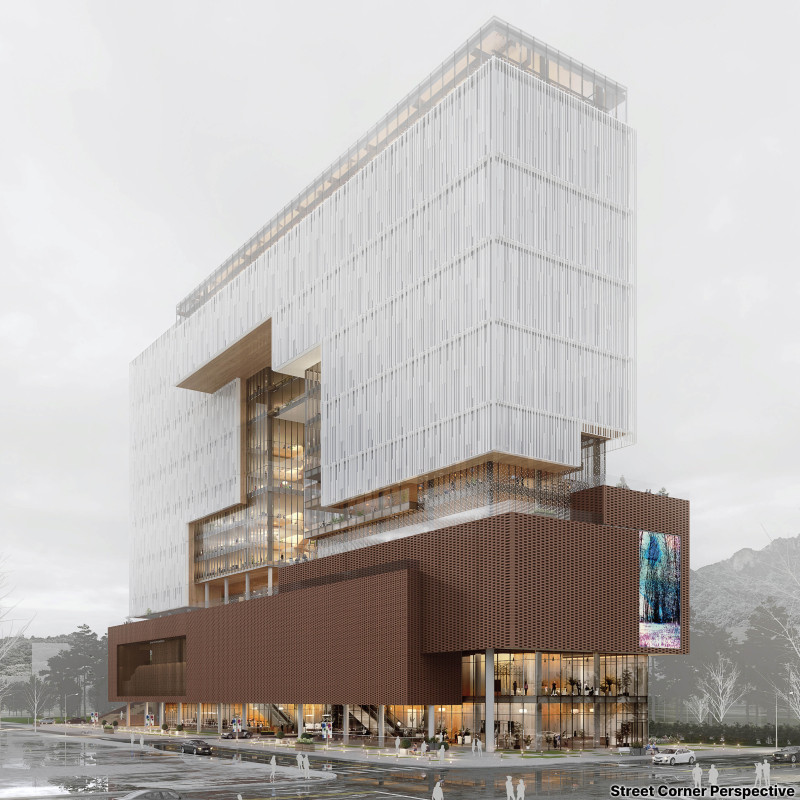5 key facts about this project
The project is situated in a context that plays a significant role in shaping its identity. Nestled within a vibrant urban fabric, the design interacts seamlessly with its surroundings, drawing inspiration from the local architectural language while incorporating contemporary aesthetics. This connection not only enhances its visual appeal but also roots it within the cultural and historical landscape of the area.
At its core, the building serves a multipurpose function, accommodating various activities that promote community engagement. This versatility is a testament to the architect's commitment to creating a space that prioritizes user experience and adaptability. The design integrates open-plan areas with flexible partitions, allowing for both collaborative and individual activities. Large windows strategically placed throughout the structure invite natural light to permeate the interior, fostering a sense of openness and warmth while simultaneously decreasing reliance on artificial lighting.
Materiality plays a crucial role in communicating the project’s narrative. The use of sustainable materials is evident, with elements such as reclaimed wood, exposed concrete, and glass being prominently featured. Reclaimed wood contributes a rustic charm and establishes a tactile quality that contrasts beautifully with the sleekness of the glass facades, which not only enhance aesthetic value but also reflect the surrounding environment, further blurring the lines between inside and outside. The exposed concrete provides a sense of permanence and strength while complementing the building's modern design language.
Unique design approaches are highlighted in the integration of green spaces, both within and outside the building. The architects have created a series of terraces and rooftop gardens that encourage biodiversity and offer inviting areas for relaxation and social interaction. This incorporation of greenery not only improves the building's environmental footprint but also enhances the well-being of its users by providing outdoor spaces that can be enjoyed throughout the year.
Furthermore, the architectural design emphasizes the importance of sustainability, with careful consideration given to energy efficiency and resource management. The inclusion of passive heating and cooling systems, alongside the use of high-performance insulation materials, underscores a commitment to reducing the building’s overall carbon footprint. This forward-thinking approach positions the project as a model for future developments, showcasing how modern architecture can contribute to environmental stewardship.
In terms of accessibility, the project exemplifies inclusive design principles, ensuring that all areas are easily reachable for individuals of varying mobility. This commitment to creating an accommodating environment resonates with broader societal goals of inclusivity and community service.
The project stands out for its thoughtful integration of contemporary architectural ideas and practices while simultaneously paying homage to its local context. The careful balance between functionality and aesthetics ensures that the building is not merely a structure but a significant space that nurtures community interaction and connection.
For those interested in exploring this architectural project further, a review of its architectural plans, sections, and designs will provide deeper insights into the detailed considerations taken during the design process. Delving into these elements will reveal the intricate thought processes and vibrant architectural ideas that ultimately shaped this noteworthy project. Embracing the nuances of the design will enrich your understanding of how architecture can influence and enhance community life.


 Kim Han Joon
Kim Han Joon 




















